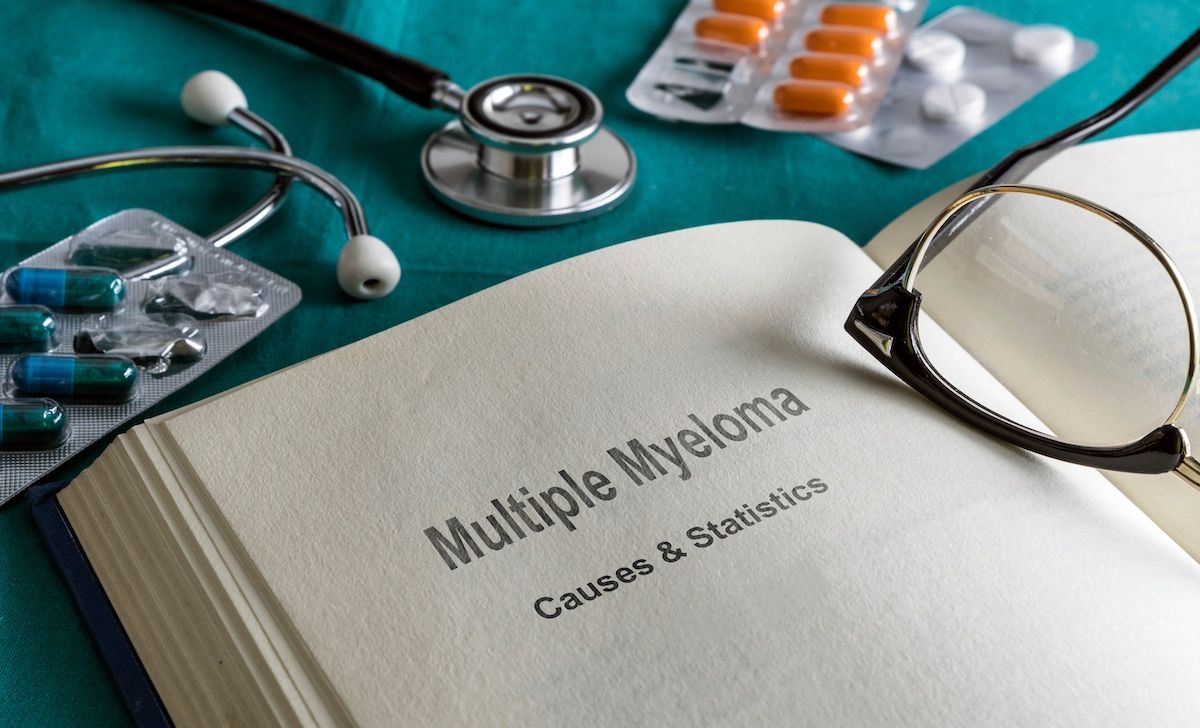- Center on Health Equity & Access
- Clinical
- Health Care Cost
- Health Care Delivery
- Insurance
- Policy
- Technology
- Value-Based Care
Final GRIFFIN Trial Data Confirm Daratumumab Benefit Against MM
Patient outcomes in this trial were compared between the regimens of lenalidomide, bortezomib, and dexamethasone and daratumumab, lenalidomide, bortezomib, and dexamethasone for use against multiple myeloma (MM).
January 4, 2022, marked the completion of the randomized, phase 2 GRIFFIN trial (NCT02874742), which investigated outcomes of transplant-eligible newly diagnosed multiple myeloma (MM) following treatment with either lenalidomide (Revlimid), bortezomib (Velcade), and dexamethasone (RVd; n = 103) or daratumumab plus RVd (D-RVd; n = 104).1
The treatment protocol for GRIFFIN was as follows:
- 4 cycles of D-RVd or RVd induction
- autologous stem cell transplant
- 2 cycles of D-RVd or RVd consolidation
- 2 years of maintenance with either D-R or R
A final post-hoc analysis recently published in Blood Cancer Journal confirms the benefit of adding the CD38 monoclonal antibody daratumumab to the RVd triplet in patients with newly diagnosed MM who remain eligible for autologous stem cell transplant (ASCT).2 Over a 4-plus-year median follow-up (49.6 months), progression-free survival (PFS) trended toward improvement among patients who received D-RVd and were 65 years or older (HR, 0.29; 95% CI, 0.06-1.48), had high-risk cytogenetic abnormalities (HRCAs) (HR, 0.38; 95% CI, 0.14-1.01), and had gain/amplification(1q21) (HR, 0.42; 95% CI, 0.14-1.27).
“It was not possible to distinguish gain versus amplification and therefore outcomes were evaluated among patients with ≥ 3 copies of 1q21,” the authors wrote.
Two trials are currently investigatint D-RVd vs RVd: PERSEUS and CEPHEUS | Image Credit: Felipe Caparrós-stock.adobe.com

Their final analysis took place after 1 or more years of follow-up among all patients after they completed maintenance treatment, died, or withdrew from the study. In this concluding part, outcomes among patients were considered according to their total high-risk HRCAs, which encompassed presence of t(4;14), t(14;16), del(17p), t(14;20), and/or gain/amp(1q21) and these groups:
- 0 HRCA (D-RVd, n = 56; RVd, n = 60)
- 1 HRCA (n = 32, n = 29, respectively)
- ≥ 2 HRCAs (n = 10, n = 8)
- Gain/amp(1q21) (n = 34, n = 28)
- Gain/amp(1q21) plus 1 other HRCA (n = 9, n = 6)
- Gain/amp(1q21) without other HRCAs (n = 25, n = 22).
Regarding efficacy, all patient subgroups had higher rates of minimal residual disease negativity (10-5) for those who received D-RVd compared with RVd, with the study authors highlighting this achievement even among the individuals who had ultra-high-risk disease (> HRCAs) or were considered functionally high risk, meaning their best recorded response was a very good partial response by the end of induction. Further, the D-RVd cohort had higher overall rates of stringent complete response (CR) compared with the RVd cohort, more patients who achieved a CR or better as their best treatment response and who were MRD negative, and who had higher rates of sustained MRD negativity.
Over the 4-plus-year median follow-up, median PFS was not reached in either treatment group among those with 0 HRCA; was not reached in the D-RVd group and was 47.9 months in the RVd group for those with 1 HRCA; was 33.9 months and not reached for the D-RVd and RVd groups, respectively, in those with 2 or more HRCAs; and was not reached in the D-RVd group and was 47.9 months in the RVd group for those with gain/amp(1q21) with or without other HRCAs.
Regarding safety, outcomes were evaluated among all patients who received 1 or more treatment doses. The most common hematologic any-grade treatment-emergent adverse events (TEAEs) were neutropenia, thrombocytopenia, and leukopenia in patients younger than 65 years who received D-RVd and neutropenia, anemia, and thrombocytopenia in the RVd cohort. In those 65 years and older, these were neutropenia, thrombocytopenia, and anemia, and thrombocytopenia, and leukopenia, respectively. The most common nonhematologic TEAEs were upper respiratory tract infection, diarrhea, and fatigue in patients younger than 65 years who received D-RVd and peripheral neuropathy, fatigue, and diarrhea for those who received RVd. In those 65 years and older, these were fatigue, peripheral neuropathy, and diarrhea for both treatment groups.
The rate of serious TEAEs was lower in the D-RVd vs the RVd group for patients younger than 65 years (41.7% vs 56%) but higher in patients 65 years and older (59.3% vs 40.7%). There were only 2 patient deaths—1 in each treatment group—and neither was thought to be related to study treatment.
The study authors note that although their results for D-RVd indicate clinical improvement compared with RVd, patients classified as ultra-high-risk with 2 or more HRCAs still have poor outcomes. Additional studies are needed specifically for these patients that innovate beyond additional consolidation and maintenance treatments, they stressed.
They also highlighted that there are 2 current trials investigating D-RVd and RVd in patients who are eligible for transplant (PERSEUS, NCT03710603) and not eligible for transplant (CEPHEUS, NCT03652064).
References
1. Study comparing daratumumab, lenalidomide, bortezomib, and dexamethasone (D-RVd) versus lenalidomide, bortezomib, and dexamethasone (RVd) in subjects with newly diagnosed multiple myeloma. ClinicalTrials.gov. Updated July 27, 2023. Accessed July 10, 2024. https://clinicaltrials.gov/study/NCT02874742
2. Chari A, Kaufman JL, Laubach J, et al. Daratumumab in transplant-eligible patients with newly diagnosed multiple myeloma: final analysis of clinically relevant subgroups in GRIFFIN. Blood Cancer J. 2024;14(1):107. doi:10.1038/s41408-024-01088-6
